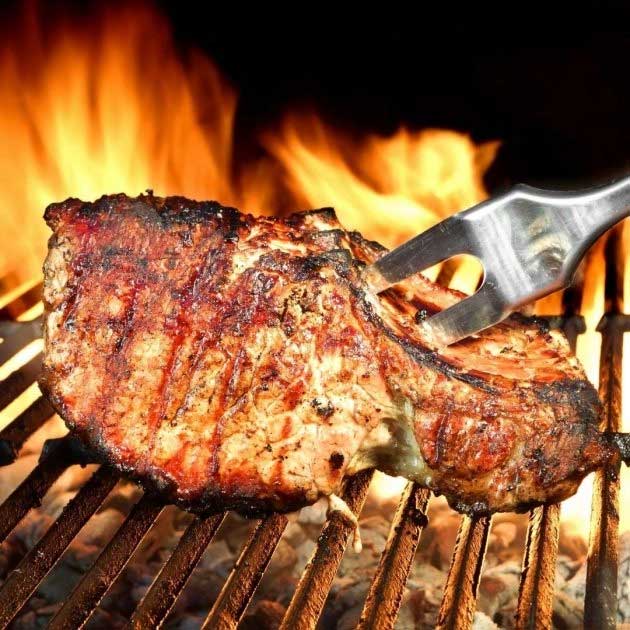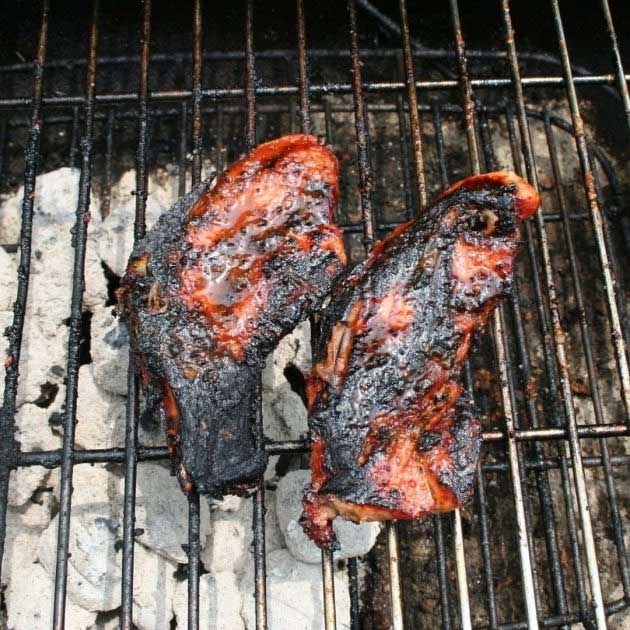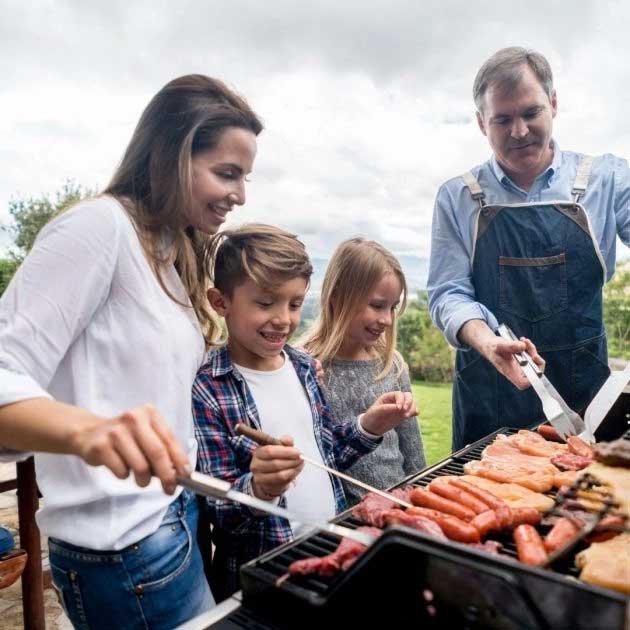INTRODUCTION: BETTER GRILLING
It’s June — can you believe it! Summer’s almost here and with summer comes more time outside and cooking on the grill. I know I love spending more outdoor time with family and friends enjoying a scrumptious meal from the grill.
However, all is not rosy in the world of high-heat cooking. Cooking foods using very high heat isn’t without hazards. In this article, we’ll talk about grilling gone wrong and learn tips and tricks for better (and safer) grilling.
THE HEADACHES OF HIGH-TEMPERATURE GRILLING

As a general rule, cooking our food at lower temperatures, slowly, is better. The high heat and flame with either a charcoal or gas grill can increase your exposure to chemical compounds like AGEs, (advanced glycation end products) HCAs, (heterocyclic amines), and PAHs (polycyclic hydrocarbons) which are known as “carcinogens”, a chemical compound that may contribute to an increased risk of cancer if inhaled or consumed. These compounds are mutagenic meaning they can change your DNA which may increase your cancer risk.
BEST FATS FOR HIGH-HEAT COOKING
Coconut oil is the most stable source of fatty acids due to its high amount of saturated fats – around 92%. This stability is important because it reduces the load of unstable free radicals that can wreak havoc in your body and damage your cells.
Coconut oil is great for cooking because it has a higher smoke point than many other oils (think extra virgin olive oil). Rather than oxidizing, coconut oil remains stable and doesn’t lose its antioxidant properties under high temperatures.
Coconut oil is rich in lauric acid, capric acid, and caprylic acid. This combination of fatty acids has an anti-inflammatory and immune-boosting effect through their antiviral, antimicrobial, and antibacterial properties.
A few other healthy fats with a high smoke point making them ideal for high-heat cooking are avocado oil and ghee. Due to their low smoke point, oils like olive oil and flaxseed oil should only be used as a drizzle on food or in such things as dressings or smoothies.
WHAT’S WRONG WITH BROWNING

During the process of high-temperature cooking, such as frying, roasting, and baking, a chemical known as acrylamide can form in some foods. This compound has been identified as a potential human carcinogen.
This chemical forms naturally from sugars and an amino acid (asparagine) that are naturally present in food, and is most likely to accumulate when food is cooked for longer periods, especially at higher temperatures.
Some foods with higher levels of acrylamide include french fries, potato chips, foods, and baked goods made from grains (such as breakfast cereals, cookies, and toast), as well as darker roast coffees.
In order to be thoughtful about decreasing your exposure to acrylamide, decrease your cooking time to avoid excessive crisping or browning, especially of the aforementioned foods, and choose “light roast” coffee.
5 STEPS TO SAFER GRILLING

Did you know that the way you cook certain meats can cause them to develop carcinogenic components? Check out these 5 tips for healthier sizzle on the grill this summer.
- For a safer way to grill, you can cook first in the kitchen and then “finish” it on the grill to reduce time on the grill. Instead of charring your meat over a big flame, opt to grill over medium to low heat. This will help reduce your carcinogen exposure plus you won’t have to worry about surprise flame flare-ups or burning your food. Remember: any time you see a plum of dark smoke, you’re increasing your exposure to HCAs and PAHs so keep your flames in check. Another option is to use your grill like an oven. Turn on one side of the grill and turn off the other. Keep your food on the cold side and let the heat cook your food without exposure to direct flames.
- Marinate. Marinating your meat first for at least 30 minutes with fresh or dried herbs like rosemary and vinegar or lemon juice can help to reduce the development of carcinogens. Herbs in the mint family — basil, rosemary, thyme, oregano, and sage — may dramatically reduce the formation of HCAs
- Add some color to your grill like fruits and veggies. Veggies and fruits do not produce the bad compounds that meat does when grilled. So next time you decide to cook some burgers on the grill, add some sliced zucchini, peppers, or corn on the cob too! Plant proteins have the potential to reduce unhealthy inflammation. Their fibers, antioxidants, and nutrients can help the body run better. Go ahead and get your grill on if you’re tossing plants on the BBQ. My BBQ faves include veggie kebabs and homemade veggie burgers, and if I”m craving meat, I’ll add those grilled veggies to a baked turkey burger. Plants for the cancer prevention win!
- Don’t blacken. The blackened parts of grilled meats typically contain the most carcinogens, so try to avoid charring or blackening meats when possible. Grilling meats, and especially blackening on the grill, can also be contributing to unhealthy inflammation.
- Ditch the aluminum foil. Aluminum foil, especially when used to bake at higher temperatures, can leach aluminum into our food. A recent study found that cooking red meat in aluminum foil may increase its aluminum content from 89% – to 378%. Though our body eliminates aluminum rather efficiently, over-exposure to aluminum has the potential to impact our long-term brain and bone health. Beeswax food wraps are becoming more popular and readily available and a great alternative to plastic wrap and aluminum foil. These types of wraps are great for wrapping cut-up produce, cheese, or other foods. They are also washable and reusable.
CONCLUSION
This summer, you can enjoy cooking on your grill, but just be smart about it! Burning and charring your food is so over — healthy sizzling on the old grill is definitely the way to go! Being smart about how you cook your food is an easy way to decrease your exposure to inflammatory compounds and carcinogens.
Confused, overwhelmed, and frustrated by all the conflicting nutrition info floating around out there? Then, check out The Better Nutrition Basics program to learn all the basics i.e. how much water I need, what those food labels mean, why I need to eat a rainbow of fruits/veggies, and how a balance of my protein, fat, and carb intake at meals can help my body run better.
You’ll get personalized 1:1 coaching with your very own health coach + bi-weekly group coaching during the program. With all that’s going on in our lives, sometimes it’s a good idea to take stock of where we are and freshen up on the basic stuff. Be sure and give this program a look!

